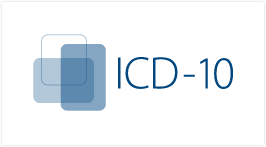ICD-10 will be implemented in just a few weeks, and many healthcare professionals are feeling anxious about the change. The new coding system is significantly different from ICD-9, and it will take some time to get used to the new format. In this blog post, we will discuss everything you need to know about ICD-10 anxiety. We will cover the basics of the new coding system, as well as how to prepare for the transition. Let’s get started!
Contents
What Is ICD-10?
 ICD-10 is the tenth revision of the International Statistical Classification of Diseases and Related Health Problems (ICD). It is a medical classification list by the World Health Organization (WHO).
ICD-10 is the tenth revision of the International Statistical Classification of Diseases and Related Health Problems (ICD). It is a medical classification list by the World Health Organization (WHO).
It replaces ICD-09, which was released in 1979. ICD is used to code and classify mortality data from death certificates.
ICD-09 had 22,000 codes, while ICD-010 has over 70,000. The increased number of codes allows for a more specific diagnosis. ICD-10 for anxiety is broken down into two major sections:
- F00-F09 – Organic, including symptomatic, mental disorders
- G43-G44 – Transient situational and stress-related disorders
These are then broken down into even more specific codes. If you have anxiety, your doctor will use these codes to help identify the type of anxiety you have.
What Are The Anxiety ICD-10 Codes?
When it comes to diagnosing anxiety, there are a number of different ICD-codes that can be used. The most common codes are F41.0 (Generalized Anxiety Disorder), F41.11 ( Panic Disorder With Agoraphobia), and F40.00 ( Phobic Anxiety Disorder). However, there are a number of other codes that can be used depending on the specific symptoms that are being presented.
Anxiety disorders are some of the most common mental health disorders that people experience. In fact, according to the National Institute of Mental Health, it is estimated that around 18% of adults in the United States suffer from an anxiety disorder in any given year.
The ICD-10 codes for anxiety are generally used by mental health professionals in order to make an accurate diagnosis. But in some cases, these codes can also be used by insurance companies in order to determine coverage for treatment.
If you think that you or someone you know may be suffering from an anxiety disorder, it is important to reach out to a mental health professional for help. With the proper diagnosis and treatment, anxiety disorders are very treatable and people can go on to live happy and healthy lives.
What Is The Role Of ICD-10 For Anxiety?
 It is believed that ICD-10 will have a significant impact on how anxiety is diagnosed and treated. The new system will provide healthcare providers with greater clarity and consistency when diagnosing anxiety disorders. There are some benefits that ICD-10 serves in the diagnosis of anxiety, these include:
It is believed that ICD-10 will have a significant impact on how anxiety is diagnosed and treated. The new system will provide healthcare providers with greater clarity and consistency when diagnosing anxiety disorders. There are some benefits that ICD-10 serves in the diagnosis of anxiety, these include:
More specific codes for different types
This is one of the common benefits that ICD-10 will serve, it provides more specific codes that can be used to diagnose different types of anxiety, earlier there was only one general code. This means that now there will be a better understanding of the different types of anxiety and how they present themselves.
Greater recognition of anxiety impacts
Many people experience anxiety at some point in their lives. It’s a natural and normal emotion. However, when anxiety becomes so severe that it impacts day-to-day living, it may be time to seek professional help. So ICD-10 can really help in these cases. It helps in getting the right diagnosis of anxiety and also in getting better treatment.
Increased awareness
Anxiety ICD-10 can help people to increase their awareness about the need for early intervention and provide more knowledge about anxiety disorders. Early intervention can significantly reduce the risk of developing chronic anxiety and its associated comorbidities. This is why it is important to be familiar with the different types of anxiety disorders and their corresponding ICD-codes.
Better data to support research
This is one of the most common arguments in support of ICD-10. The new system will provide much more detailed data that can be used to support research into causes and treatments for various conditions. This could lead to breakthroughs in our understanding of many diseases and disorders and ultimately lead to better care for patients.
So these are some common benefits that ICD-10 can bring. But what about the potential downside? Let’s further discuss the anxiety ICD-10 limitations.
Limitations Of ICD-10 For Anxiety
There are some limitations to using ICD-10 for anxiety diagnosis. These include:
Potential for errors
One of the biggest concerns with ICD-10 Anxiety is the potential for errors. The new system is much more complex than the old one, and that could lead to more mistakes being made. This could cause problems for patients who are incorrectly diagnosed or treated, and it could also lead to other risks.
Inadequate training
Another concern is that many doctors and other healthcare providers have not received adequate training on how to use ICD-10 Anxiety. This could lead to them making mistakes when diagnosing or treating patients.
Potential for increased costs
This is the most commonly cited reason for anxiety surrounding the ICD-ten transition. Many organizations believe that they will need to invest in new hardware and software, as well as train their staff in order to accommodate the changes. However, there are a few ways to mitigate these costs.
More time
Sometimes, this can be helpful if you want to get more in-depth with your analysis. However, if you’re feeling overwhelmed or bogged down, this can worsen anxiety. In these cases, it may be best to consult a mental health professional to help manage ICD-10 Coding anxiety.
It’s also important to remember that not every single code will be relevant to every case. In some instances, only a handful of codes will be necessary. Therefore, it’s important to focus on the most relevant codes rather than trying to memorize every single one.
So these are some common limitations that can come with ICD-Coding anxiety. If you find yourself struggling, don’t hesitate to reach out for help from a mental health professional. They can provide guidance and support to ensure that you’re using this system in the most effective way possible.
What To Do After The Diagnosis?
 When you receive an anxiety diagnosis, it can be overwhelming. You may feel like you are the only one dealing with this mental illness, but trust me, you are not alone. Here are a few things to keep in mind after receiving your diagnosis:
When you receive an anxiety diagnosis, it can be overwhelming. You may feel like you are the only one dealing with this mental illness, but trust me, you are not alone. Here are a few things to keep in mind after receiving your diagnosis:
Talk to your doctor about your treatment options
There are many different ways to treat anxiety, and what works for one person may not work for another. That’s why it’s important to talk to your doctor about all of the different treatment options available. They will be able to help you find the right treatment plan for you. You might also want to consider seeing a therapist or counselor who can help you learn ways to cope with your anxiety.
Join a support group
There are many different types of support groups available, both in-person and online. These groups can provide you with invaluable support and information. Talking to others who are dealing with anxiety can help you feel less alone and can give you some useful coping strategies. Look for a group that specializes in anxiety disorders, as they will likely have the most accurate information and resources.
Take time for yourself
It is important to manage your anxiety in a healthy way and not let it take over your life. One way to do this is to make sure you are taking time for yourself every day. This can be something as simple as taking a few minutes to read or taking a walk outside. Whatever it is, make sure it is something that relaxes you and gives you a break from your every day worries.
Talk to someone you trust
If you are feeling overwhelmed by anxiety, it is important to talk to someone about it. This can be a friend, family member, therapist, or anyone else too who you feel comfortable talking. Talking about your anxiety can help you feel more in control of it and may help you understand it better.
Identify your triggers
Anxiety can be triggered by many different things. It is important to try to identify what your triggers are so that you can avoid them or be prepared for them. Some common triggers include stress, change, conflict, and certain environments or situations. If you can identify your triggers, you can develop a plan to either avoid them or deal with them in a healthy way.
Take care of yourself
 It is important to take care of yourself during this time. Make sure to get enough rest and exercise. Also, eat healthy foods and avoid excessive alcohol consumption. Taking care of yourself will help you cope with the stress and anxiety of the ICD-10 transition. This is a difficult time for everyone, so it is important to be kind to yourself and others.
It is important to take care of yourself during this time. Make sure to get enough rest and exercise. Also, eat healthy foods and avoid excessive alcohol consumption. Taking care of yourself will help you cope with the stress and anxiety of the ICD-10 transition. This is a difficult time for everyone, so it is important to be kind to yourself and others.
Overall, these tips will help you get through the anxiety. This condition can be tough, but you can get through it. Be patient with yourself and others during this time. Everything will eventually get better. Anxiety is a difficult thing to deal with, but you can do it! Just take things one day at a time.
Conclusion
To conclude, anxiety ICD-10 is a tool used by mental health professionals to diagnose and classify anxiety disorders. While it can be helpful in understanding the different types of anxiety disorders, it is important to remember that each person experiences anxiety differently. If you are struggling with anxiety, talk to your doctor or a mental health professional to get help.
There are several resources that can help you better understand anxiety ICD-10 and better deal with your anxiety. For more tips and guidance, you can reach out to Therapy Mantra. The team of professional counselors is more than happy to help you in your journey to recovery. Contact us today to learn more about our services. You can also book an online therapy session or download our free Android or iOS app.


